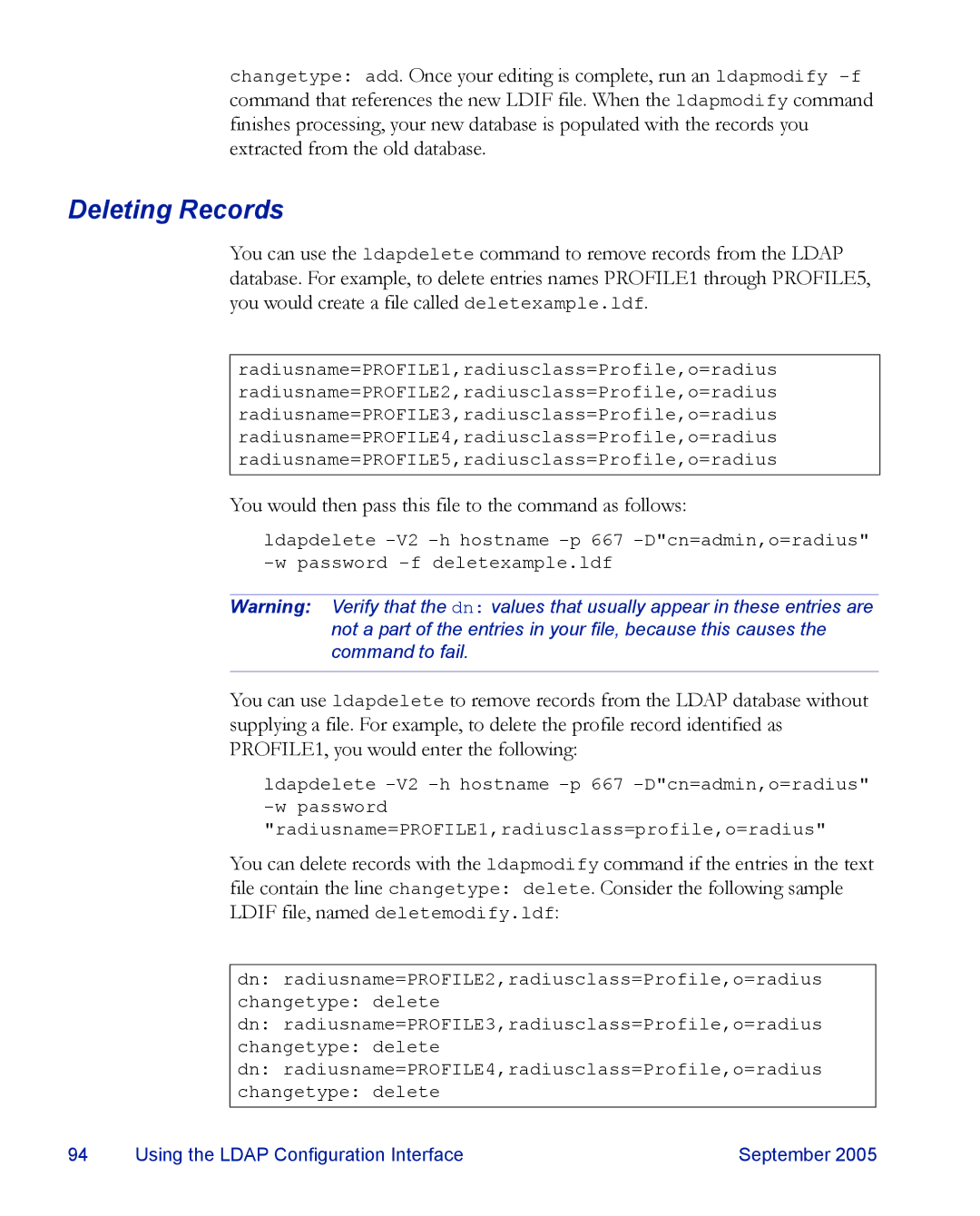
changetype: add. Once your editing is complete, run an ldapmodify
Deleting Records
You can use the ldapdelete command to remove records from the LDAP database. For example, to delete entries names PROFILE1 through PROFILE5, you would create a file called deletexample.ldf.
radiusname=PROFILE1,radiusclass=Profile,o=radius
radiusname=PROFILE2,radiusclass=Profile,o=radius
radiusname=PROFILE3,radiusclass=Profile,o=radius
radiusname=PROFILE4,radiusclass=Profile,o=radius
radiusname=PROFILE5,radiusclass=Profile,o=radius
You would then pass this file to the command as follows:
ldapdelete
Warning: Verify that the dn: values that usually appear in these entries are not a part of the entries in your file, because this causes the command to fail.
You can use ldapdelete to remove records from the LDAP database without supplying a file. For example, to delete the profile record identified as PROFILE1, you would enter the following:
ldapdelete
You can delete records with the ldapmodify command if the entries in the text file contain the line changetype: delete. Consider the following sample LDIF file, named deletemodify.ldf:
dn: radiusname=PROFILE2,radiusclass=Profile,o=radius
changetype: delete
dn: radiusname=PROFILE3,radiusclass=Profile,o=radius
changetype: delete
dn: radiusname=PROFILE4,radiusclass=Profile,o=radius
changetype: delete
94 | Using the LDAP Configuration Interface | September 2005 |
